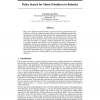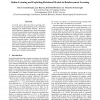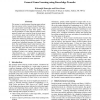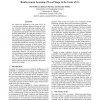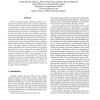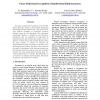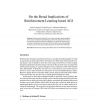133
click to vote
SCAI
2008
15 years 1 months ago
2008
Abstract. A reinforcement architecture is introduced that consists of three complementary learning systems with different generalization abilities. The ACTOR learns state-action as...
107
Voted
NIPS
2008
15 years 1 months ago
2008
Many motor skills in humanoid robotics can be learned using parametrized motor primitives as done in imitation learning. However, most interesting motor learning problems are high...
IJCAI
2007
15 years 1 months ago
2007
In recent years, there has been a growing interest in using rich representations such as relational languages for reinforcement learning. However, while expressive languages have ...
116
click to vote
IJCAI
2007
15 years 1 months ago
2007
Inverse Reinforcement Learning (IRL) is the problem of learning the reward function underlying a Markov Decision Process given the dynamics of the system and the behaviour of an e...
107
click to vote
IJCAI
2007
15 years 1 months ago
2007
We present a reinforcement learning game player that can interact with a General Game Playing system and transfer knowledge learned in one game to expedite learning in many other ...
106
click to vote
IJCAI
2007
15 years 1 months ago
2007
We explore an application to the game of Go of a reinforcement learning approach based on a linear evaluation function and large numbers of binary features. This strategy has prov...
112
click to vote
HIS
2008
15 years 1 months ago
2008
XCS is a learning classifier system that combines a reinforcement learning scheme with evolutionary algorithms to evolve rule sets on-line by means of the interaction with an envi...
ESANN
2007
15 years 1 months ago
2007
The eligibility trace is one of the most used mechanisms to speed up reinforcement learning. Earlier reported experiments seem to indicate that replacing eligibility traces would p...
101
click to vote
DICTA
2007
15 years 1 months ago
2007
This paper presents the recognition of handwritten Hindi Characters based on the modified exponential membership function fitted to the fuzzy sets derived from features consisting...
AGI
2008
15 years 1 months ago
2008
Reinforcement learning (RL) is an attractive machine learning discipline in the context of Artificial General Intelligence (AGI). This paper focuses on the intersection between RL ...

